Clarke, 1948
‘Esther Staley’, S. ×hyacinthiflora
Clarke 1948; S VI
syn. – ‘Ester Staley’, ‘Esther’, ‘Esther Stanley’, ‘Ester Stayley’, ‘Ester Stayli’, ESTHER
(trade designation used for cut flowers of this cultivar)
{‘Mme F. Morel’ × ? }
Clarke, US Plant Patent No. 768 [Dec. 16, 1947] – as S. vulgaris; Clarke, Cat. vol. 15, 9 [1948]; Woody Plant Register, AAN, No. 186 [1949]; Lilacs for America, 29 [1953]; Photo on Jorgovani/Lilacs 2015 DVD.
Named for Mrs Esther Staley [no dates], Riverbank, California, who pioneered the introduction of many garden plants in the San Joaquin Valley.
Awards: RHS Award of Merit 1961; RHS Award of Garden Merit 1993.
cultivar name presumed registered 1953; name established and accepted.
Forcing cultivar in the Netherlands.
Международный регистр названий культиваров рода Syringa L.
The present discovery relates to a new and distinct variety of Syringa vulgaris plant, resulting from a cross made by me between an unnamed seedling as the pollen parent and a variety named “Mme. Francisque Morel” as the seed parent. This new variety has been reproduced from buds through several generations and its characteristics appear to be permanently fixed.
This new variety of lilac is the result of prolonged breeding efforts—extending over a period of fifteen years—to produce a pure pink lilac, not merely a lavender pink shade, but an attractive rose tone, that would combine all of the remarkable and unusual growth and desirable qualities of the finest lilacs. I believe that this lilac is unique in color and is the nearest to a true pink single-petaled lilac that is known.
Another distinct characteristic of this new variety is the red coloring of the buds as the petals begin to unfurl, which gradually shades off into the distinctive pink tone as the flower expands.
In general plant structure, this new variety is similar to the well-known Syringa vulgaris. The individual flower has the usual, small, bell-shaped, four-toothed calyx, but has a long salver-form, four-lobed corolla. Its panicles are large in size, are usually forked and rather broad for their length. The individual floret is approximately 7/8 to 1 inch in diameter across the petal tips. Its habit of growth is unusually vigorous. It blooms profusely in the spring of the year; the first blooms appear about April 15. The stems are long because of its very vigorous growth.
The flower trusses present a distinctive compact conoidal mass of pink which is made more conspicuous by the reddish shade of the buds. The broad full thyrses on the upright sturdy stems are outstanding and noticeable. The abundant quantity of dark green foliage forms a pleasing contrast for the pink blooms. The flowers have a delicate fragrance.
WALTER BOSWORTH CLARKE. Авторское описание для Патентной службы США
Эстер Стейли Esther Staley. РГЖ (*)
(Clarke, 1948)
Бутоны фиолетово-красные; цветки ярко-лилово-красные, крупные (2 см), простые, душистые; лепестки широкоовальные, с приподнятыми краями, при отцветании отгибаются назад. Соцветия крупные, многоверхушечные, из двух-трех (иногда пяти) пар плотных, прочных, островерхушечных метелок (до 16 см длиной). Листья удлиненно-заостренные. Кусты высокие, редкие, прямые. Цветет очень обильно, в ранние сроки и отличается яркостью соцветий. Используется для оформления и срезки.
«ВИДЫ И СОРТА СИРЕНИ, КУЛЬТИВИРУЕМЫЕ В СССР» Л.И. Рубцов, Н.Л. Михайлов, В. Г. Жоголева, Киев, Наукова Думка, 1980
(*) РГЖ – ранний гибрид Жиральди (S. oblata var. giraldii Rehd.)

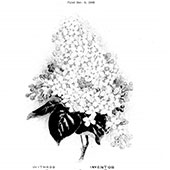
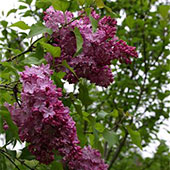
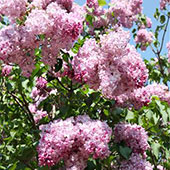

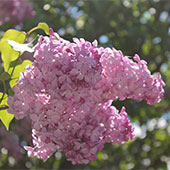
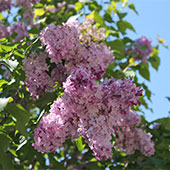
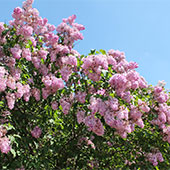
Оставить комментарий
Пожалуйста, зарегистрируйтесь, чтобы иметь возможность оставлять комментарии.